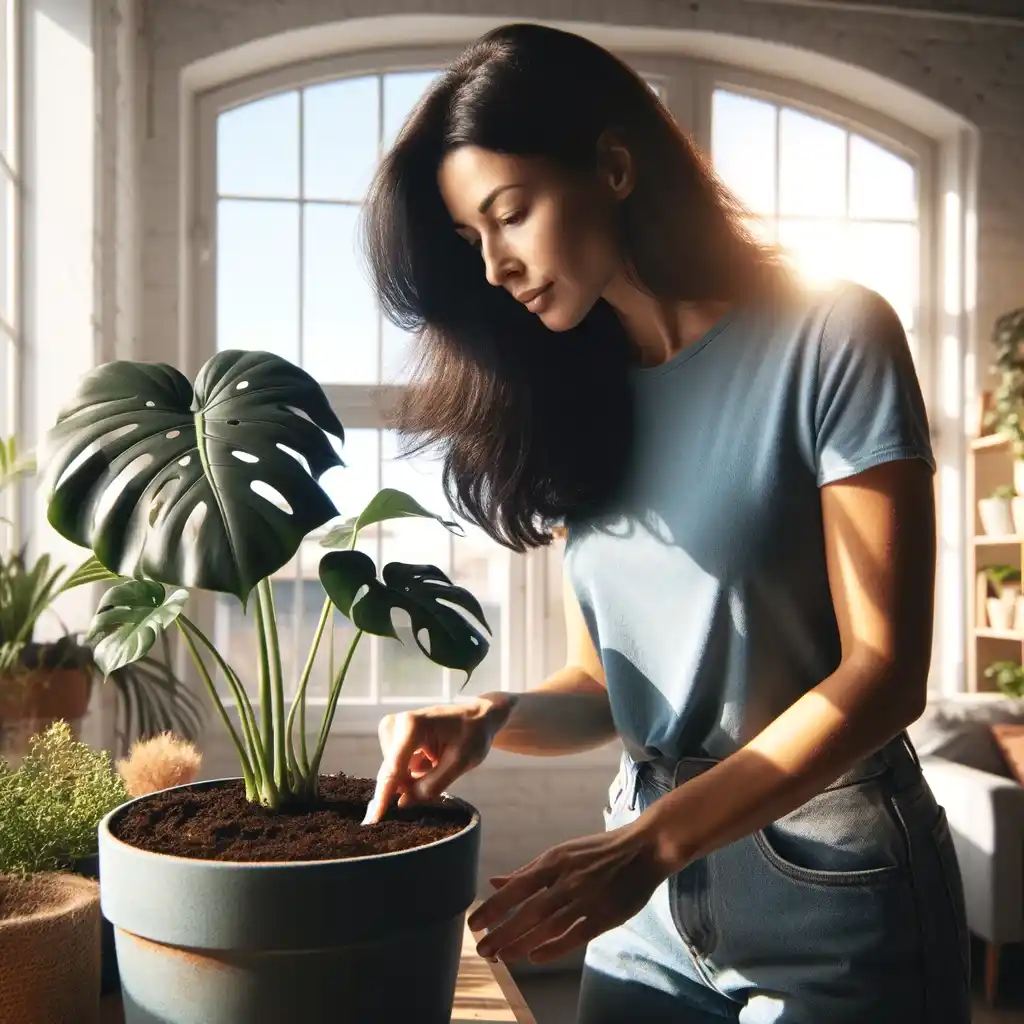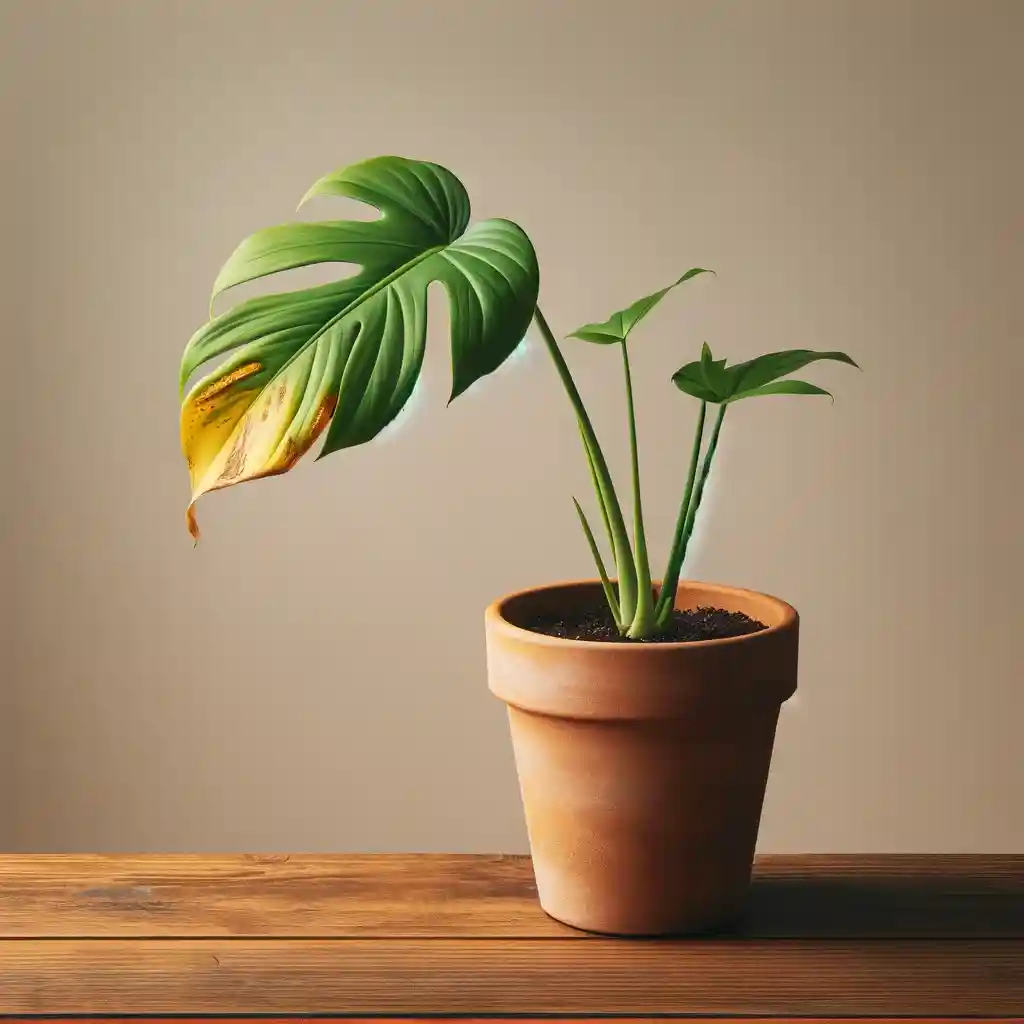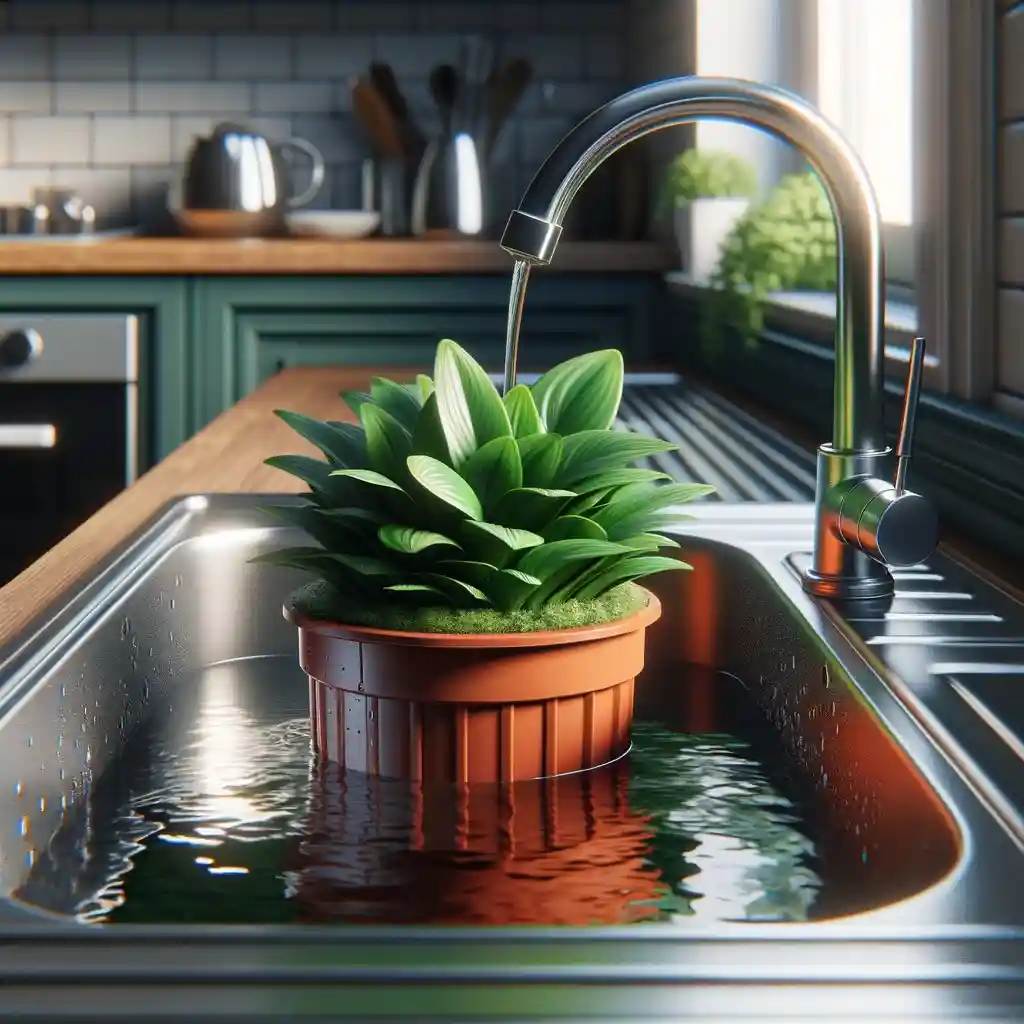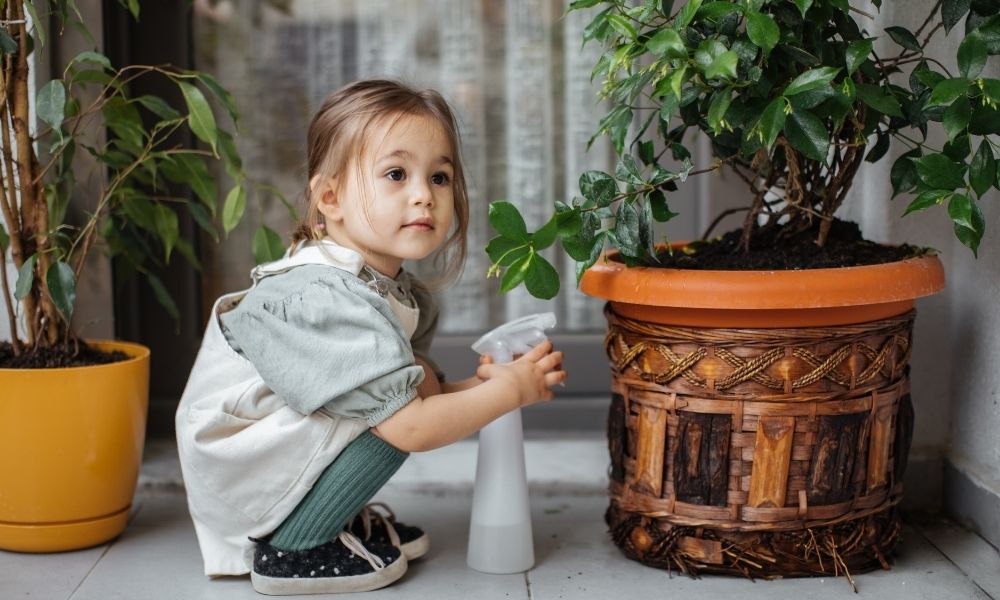It’s tricky, isn’t it? You hear so much about overwatering houseplants from different parts of the internet, but you want to make sure your plants are getting enough water.
All you want is a simply way to know how and when to water a houseplant.
I like simple things (maybe this says a lot about me!?). So I’m going to tell you all about how I can tell my plants need water as well as how I do it because it really is quite simple.
Set Up Your Houseplants For Good Watering
It all starts with getting all your houseplants set up in the right way.
The first and most important thing to remember is that the amount of light your houseplant gets determines how quickly it drinks.

If you don’t give your houseplant enough light for it to thrive then you are always going to risk it sitting in water too long. This can cause root rot. Don’t let this happen, just have a basic understanding of how much light houseplants needs.
You’ll need to put your houseplants in pots that have drainage holes. As you’ll see later, this makes watering them really easy.
When I’m repotting my houseplants, I always put them in simple, cheap, plastic plant pots. I can then put these in a decorative planter to make them look good.
In addition, I plan ahead with my water. Tap water is generally fine, but you can easily get rid of some of the chemicals it contains (in order to keep it clean) by filling up a big jug of water and letting it sit for 24 hours.
Finally, make sure your houseplants are in the right soil. You will find out about the 3 types of houseplant below, but to keep it simple, just make sure succulents and cacti are sitting in succulent and cacti potting mix and all other plants are in an all-purpose houseplant potting mix.
Makes sense, right?
These four practices will make watering your houseplants the right way a lot easier.
When To Water A Houseplant
Let’s introduce the 3 types of houseplant you will come across:
- Dry Houseplants.
- Dry-Moist Houseplants.
- Moist Houseplants
These are just names I’ve given them. I’ll describe what they all mean shortly. But first, I want to introduce you to the finger technique. No, you haven’t come to the wrong place!
As you become a confident houseplant gardener, you will rely on your finger quite a lot. It is a complicated instrument that no other gadget can compare to.
All you do is stick your finger into the soil. Some plants, as you will discover below, need all of their soil to dry out. Some need the top inch to dry out. Some don’t want the soil to dry out at all. Your finger is going to be your guide through all of this!

Note that this method does not depend on time. Your houseplant’s needs will vary depending on time of year, location, humidity and other factors. But the soil will always dry out in the same way.
Dry Houseplants – These are plants like succulents, cacti, Snake Plants and Aloe Vera. They come from naturally dry and hot habitats and are adapted to surviving without much water.
As such, you do not need to (or want to) water them too often. They will happily exist in completely dry soil for weeks.
But they do need water, so make sure you water them at least every month. If they are drying out very quickly (in the summer, or in a hot and dry location) then increase watering slightly. But we’re talking a maximum of every three weeks.
Ultimately, with the finger technique, you are looking to make sure the soil dries out completely before applying any water. A combination of a 3-5 week schedule and the finger technique should keep you on track.
Dry-Moist Houseplants – These are the vast majority of houseplants. They include such plants as Pilea Peperomioides, Monstera Deliciosa, Fiddle Leaf Fig and Golden Pothos.
Dry-Moist houseplants like to be watered fairly regularly but also given some time for their soil to dry out a little.
Using the trusty finger technique, you’re looking for the top 1 inch (2 cm) of soil to be dry before considering watering. This usually takes around 1-2 weeks depending on location, light levels, temperature.
They can usually benefit from a bit of extra humidity, which we will talk about later in the guide.
Moist Houseplants – Finally, moist houseplants are ones that like their soil to be kept moist at all times. They love a bit of extra moisture in the air around them too.
Moist houseplants include such plants as ferns, Norfolk Island Pine, Umbrella Palm and Baby’s Tears.
Now, when I say ‘moist’ I do not mean ‘wet’. Be careful not to make the soil too soggy otherwise the roots of these plants will start to rot.
The easiest way to ensure this is to follow the watering instructions below and then check the soil regularly. You guessed it, with the finger technique!
If the top of the soil is dry then it is time to water.
Other Signs Of When To Water A Houseplant
There are a few tell-tale signs that you need to water a houseplant other than what you will notice with a prod of a finger.
Soil Shrinking
If you notice a small gap forming between the soil and the edge of the pot, this is the soil shrinking as all the moisture has been lost from it.
You might see this happen in the dry type of houseplants and that’s ok, stick to the plan! But if it happens with other houseplants, you definitely need to water them!
Wilting Leaves
This should be fairly obvious, but if you see your normally pert and upright houseplant leaves drooping and wilting then it’s a sure-fire sign they need some water.
A plant’s leaves are full of water and if they don’t have enough then they can lose their structure.
If you see this happening, get your finger in there and check the soil. I do not have an obsession with this finger technique, it’s jut a really handy method!
Yellowing and Drying Leaves
If you see this happening, then you really haven’t been following my advice have you! 😜

Don’t confuse this with just yellowing leaves, which can be a sign of too much water. If the leaves are yellow and dry then your plant is starting to really suffer from not enough water. Give it a good soak for 20-30 mins and keep a closer eye on it in future!
Great! Now How Do I Water A Houseplant?
You just pour some water on them, surely?
Well, there are better ways that are going to help your houseplants thrive and you won’t run the risk of letting them sit in standing water too long.
The best way to water a houseplant, while ensuring you don’t displace soil or rinse out nutrients from the soil, is to water them from below.
This simply means placing your houseplants in a tray or any container than you can sit a few pots at a time in. Then fill up this tray with an inch (2-3 cm) of water.
Make sure the level of water is above the bottom level of the soil. It will soak up the water until it has what it needs. You don’t need the roots to be soaking up the water, the soil will do this by capillary action.
Once you can feel the top of the soil is moist (usually 20-30 minutes), take the plants out of the water and let them drain off the excess water for 10-15 minutes.

Then place them back in their planters and you’re done!
The advantage of this method is that the plant will be drawing up water as the soil does, so you will be left with a satisfied houseplant and a sufficiently moist soil. When you water with a watering can, you often only give the plant enough water for right now.
What About Humidty?
Yes, I mentioned some plants in the Dry-Moist category and all plants in the Moist category need to have a higher humidity around them.
For most cases, you can simply give you plants a misting with a spray bottle. Be sure to get one that specifically ‘mists’ rather than sprays so that you don’t damage delicate plants.
As a general rule, any plants that aren’t in the Dry category will be happy with a misting every couple of days.
If you have a houseplant that absolutely loves high humidity, such as most ferns and Calatheas, then you can place them on a tray of pebbles and fill the tray with water. The water will slowly evaporate, creating a high humidity around the plant.
What If I Go Away On Holiday?
If you’re away for a week, don’t worry about it, just water your plants before you go and they will be fine. You might even be fine up to two weeks, although for Moist houseplants you might want to try the pebble tray trick above. In addition, you could group plants together before you leave to raise the humidity.
Anything over two weeks and you will need to consider other options, which we cover in our post on watering plants while you’re away, such as:
- Self-watering pots.
- Ask a friend or neighbour to houseplant-sit.
- Use the twine trick (fill a bowl with water, put the bowl higher than your houseplant, run some twine between the bowl and your houseplant’s soil).
Summary
We’ve covered a lot of ground, but it’s all been pretty simple hasn’t it?
In summary, if you want to know when to water your houseplants:
- Use the finger technique!
- Know your houseplant types:
- Dry – Water when soil is dry and the plant hasn’t been watered for at least 3 weeks.
- Dry-Moist – Water when the top inch of soil is dry.
- Moist – Water when the top of the soil is dry.
- Check for visual signs your houseplant needs water.
The easy method of how to water your houseplants:
- Take plants out of their planters (bit still in their pots) and put them on a tray.
- Fill the tray with an inch of water.
- Leave them to soak for 20-30 minutes.
- Drain off excess water and replace them in their planters.
Watering houseplants does not have to be complicated. You don’t need to do something different for every plant.
Now that you know how and when to water a houseplant, you should be able to avoid both underwatering and overwatering with ease.
Let me know how you get on, and ask me anything in the comments below.

